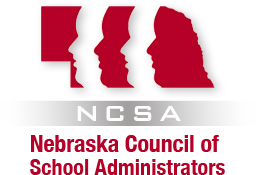Why Do New Dyslexia Laws Matter to School Administrators?
A new era in education excellence was ushered in during 2017/2018 with the passage of Nebraska’s first dyslexia legislation. All Nebraska school administrators, State Board of Education members, and ESU administrators are already aware of this legislation. The intent of this article is to increase your understanding of dyslexia and the reasons for the educational measures required in this legislation.
Passage of LB645 in 2017 placed the definition of dyslexia in state education statute Section 79-1118.01. This definition was adopted by the International Dyslexia Association in 2002 and is used by the National Institute of Child Health and Human Development. LB1052 was passed in 2018 and states that every student with characteristics of dyslexia shall receive evidence-based multisensory structured literacy instruction beginning in the 2018-2019 school year. It instructs the Nebraska Department of Education to distribute a Dyslexia Technical Assistance Document to all school districts, ESU’s and teacher education programs. LB1052 requires all NE teacher education programs, starting in July, 2019, to include instruction in best practices for teaching reading and in the science and signs of dyslexia, as well as interventions, accommodations and assistive technology for students with dyslexia.
LB1081 was also passed in 2018. It stipulates that an approved reading assessment be administered thrice yearly to all students in K-3 grades, beginning in the 2019-2020 school year. NDE will determine the threshold level of performance on this assessment, below which students will be identified as having a reading deficiency. LB1081 defines the supplemental reading intervention program required for those students. Additional measures are also provided in this legislation.
According to LB645, dyslexia typically results from a deficit in the phonological or sound component of language. One phonologic skill is phonologic awareness, a more general term meaning “all levels of awareness of the sound structure of words” and “the earliest stage of developing an awareness of the parts of words,” according to Dr. Sally Shaywitz, Yale neuroscientist and author of Overcoming Dyslexia.1 Assessing phonologic awareness by evaluating a student’s ability to rhyme words, count syllables in words and words in sentences, and use onset and rime to form new words is strongly predictive of reading and spelling acquisition. Phonemic awareness, in contrast, “refers to the more advanced ability to notice, identify and manipulate the smallest particles that make up a word: phonemes”1 per Shaywitz. Most school assessments focus on this level of awareness, which has the strongest relationship to later reading.1 Examples include segmenting (breaking a word into individual sounds), blending (putting sounds together to make a word), isolating sounds (what word in a group begins with the same sound as a given word), addition, deletion and substitution of sounds. “By the end of first grade, most children have just about mastered their basic phonologic skills”1 wrote Shaywitz. Other phonologic skills include phonologic memory (child repeats in order a series of numbers given orally) and phonologic access (rapid automatic naming of familiar objects). Because dyslexia generally results from a phonologic deficit, both teacher observation of and standardized testing for phonologic skills can identify students at-risk for reading struggles and dyslexia as early as four years of age.
Formal testing is generally not necessary prior to initiating services for students at-risk for dyslexia. This is why LB1052 requires that students who just exhibit characteristics or signs of dyslexia receive the appropriate instruction. Common signs include difficulty rhyming words, segmenting, blending, and counting syllables in words, as noted earlier. Other signs of dyslexia are difficulty learning and remembering alphabet letter names, shapes and sounds, difficulty sequencing, as in counting numbers, listing the days of the week or months of the year and naming the alphabet letters in order, or difficulty naming objects. Some students have difficulty learning nursery rhymes and songs and naming the beginning or ending sounds of words. Other students substitute sounds in words, such as aminal for animal, or substitute words in sentences, such as “was” for “saw”. Some students have difficulty following directions or confuse “after” with “before”, or “above” with “below”. LB 645 contains additional characteristics of dyslexia, in addition to the phonologic skill deficits noted earlier.
LB645 states that dyslexia is neurobiological in origin, and it is usually inherited. Up to one in five individuals has dyslexia, according to Dr. Shaywitz and other researchers. Up to 50% of children born to a parent with dyslexia, or with a sibling with dyslexia, will also have dyslexia. Functional MRI studies by Shaywitz and many other neuroscientists have shown that individuals with dyslexia lack the wiring for reading to the two primary reading systems in the left posterior brain. One reading system slowly analyzes a word, breaking the word into individual letters, associating a sound with each letter and putting those sounds together to read or say the word, utilizing the phonologic skills discussed earlier. After repeatedly analyzing a word in this system, the second system stores that word, its definition, spelling and pronunciation for rapid recall in the future. Students with dyslexia cannot use this primary word analysis system or the rapid word form recall system because they lack the wiring to both systems, not only as children but also as adults. With considerable effort and frustration, some develop compensatory reading systems, all of which are slow, making reading difficult. Individuals with dyslexia do not outgrow their reading problems without early appropriate intervention, because they are neurological. Difficulties with accurate and/or fluent word recognition, spelling, decoding, comprehension and growth of vocabulary can all be attributed to these neurological differences in those with dyslexia.
LB1052 mandates that evidence-based multisensory structured literacy instruction be provided to students with signs of dyslexia. The basis for requiring this appropriate instruction is that it establishes the brain wiring for reading to the two primary reading centers. Multiple studies using fMRI’s corroborate this. When this instruction begins in first grade, the expected reading disability is reduced by 67% - 87%.2 When this instruction is delayed until third grade, the expected reading disability is reduced by only 26%.3 Children identified as reading disabled after second grade rarely catch up to their peers.3 Not only do the fMRI’s demonstrate use of the primary reading centers after this instruction, but those students became accurate and fluent readers. Student simultaneous use of their senses (multisensory) by seeing, hearing, touching and movement, and speaking (requiring movement of lips, tongue and vocal cords) helps all students, but especially those with dyslexia, to learn and remember individual and combinations of letters and sounds, or phonologic skills.
An excellent resource for school administrators for evidence-based structured literacy instruction, assessment and intervention is the Nebraska Center for Research on Children, Youth, Families and Schools (CYFS) at UNL. This Center has helped nearly 60 NE school districts and 2 ESU’s implement MTSS, using evidence-based assessments, structured literacy core instruction and interventions, and explicitly teaching rules of the English language. CYFS researchers found that the stronger the core classroom instruction, the fewer the students who required interventions. As a result, more resources, time and intensity of intervention were available for students struggling with reading. They also report that successful MTSS implementation with fidelity generally requires creation of new, school-wide systems for teacher training in evidence-based assessments and core instruction, in data-driven decision-making for progressive reading interventions, and in progress monitoring. Also needed are systems for teacher feedback and data-driven coaching and for coordination between disciplines to create a school master schedule. These systems build a school’s internal capacity.
Administrators play a key role in initiating these changes, in order to comply with LB1052 and LB1081, by providing comprehensive professional development for teachers and support for all school staff. Helpful resources include the National Center on Intensive Intervention for evidence-based assessments and interventions and the What Works Clearinghouse for evidence-based core instruction and interventions. Ultimately, pre-service teacher education in the areas mandated by LB1052 will result in the optimal preparation of teachers to teach ALL students to read.
Without the testimony in support of LB1052 given by NCSA, NASES, ESU Coordinating Council, NSLHA, NSEA, State Board of Education, NMA, NDA and many others, this legislation would not have been passed unanimously by the legislature, as was LB1081. LB1052 provides the earliest opportunity for students to receive appropriate effective instruction prior to experiencing reading failure. LB1081 provides earlier identification of students with reading deficiencies. The Nebraska Dyslexia Association is confident that parents and students with dyslexia are very grateful for your support!





















